12 Strategies for Building Emotional Regulation and Empathy in Young Children
July 7, 2020
Emotional regulation and empathy are two of the most important social-emotional skills for young children to develop. As authors Jennifer Grisham, Mary Louise Hemmeter, and Kristie Pretti-Frontczak point out, “children who manage their own emotions well and who respond appropriately to the emotions of others will be more successful in their interactions with their peers.”
As early childhood programs reopen, how can you help the young children you work with strengthen these critical skills—especially when many children have faced tough challenges over the past year? In today’s post, excerpted and adapted from Blended Practices for Teaching Young Children in Inclusive Settings, Second Edition, we’re sharing some simple tips you can use to help kids understand their own and others’ emotions, manage their own behavior, and communicate feelings skillfully. Try these suggestions in the classroom and share them with parents, who may be looking for additional guidance on social-emotional development.
 Show them what emotions look like. Using photos and illustrations of a variety of facial expressions, directly teach children what emotions look like. Set up a mirror and ask children to imitate the facial expressions they see in the photos. Ask children questions: What might have made the person in the photo feel that way? What makes you feel the same way that this person feels?
Show them what emotions look like. Using photos and illustrations of a variety of facial expressions, directly teach children what emotions look like. Set up a mirror and ask children to imitate the facial expressions they see in the photos. Ask children questions: What might have made the person in the photo feel that way? What makes you feel the same way that this person feels?
Teach emotion vocabulary words. Children need to know more than basic words like happy, sad, and mad to accurately label their emotions and the emotions of others. Focus on teaching them a wide variety of more specific words, such as frustrated, disappointed, and proud.
Create a collage. Work together on a classroom collage related to a specific emotion, such as “proud.” You can cut pictures out of magazines, take or find photos of children making appropriate facial expressions, and have children dictate or draw scenarios related to the emotion.
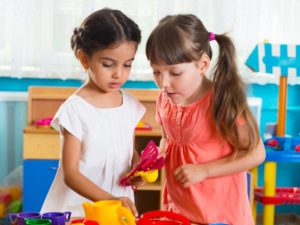 Look for teachable moments. Throughout your daily activities and routines, be on the lookout for moments when young children are displaying different emotions, and work with them to help label the emotion they’re feeling. Listen nonjudgmentally to children and acknowledge the validity of their feelings.
Look for teachable moments. Throughout your daily activities and routines, be on the lookout for moments when young children are displaying different emotions, and work with them to help label the emotion they’re feeling. Listen nonjudgmentally to children and acknowledge the validity of their feelings.
Put up a feelings chart. A colorful chart illustrating different emotions can be a great tool for helping children to identify what they’re feeling at a specific time. Encourage them to identify if and when their emotions change throughout the day.
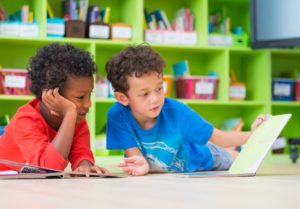 Seek out books about feelings. Use children’s literature to teach kids a wider range of emotion vocabulary and talk about scenarios when children might feel different emotions: excited, gloomy, angry, proud, surprised, jealous, anxious. Encourage discussion about how the characters in the story might be feeling and why. You can also look for books (such as When Sophie Gets Angry—Very, Very Angry [Bang, 2004]) that feature characters who feel out of control and learn appropriate ways to deal with their feelings.
Seek out books about feelings. Use children’s literature to teach kids a wider range of emotion vocabulary and talk about scenarios when children might feel different emotions: excited, gloomy, angry, proud, surprised, jealous, anxious. Encourage discussion about how the characters in the story might be feeling and why. You can also look for books (such as When Sophie Gets Angry—Very, Very Angry [Bang, 2004]) that feature characters who feel out of control and learn appropriate ways to deal with their feelings.
Get crafty. Create simple dolls out of popsicle sticks and add faces that express different feelings. Have children point to or hold up the appropriate dolls to identify how a character is feeling when you’re reading a book or a social story.
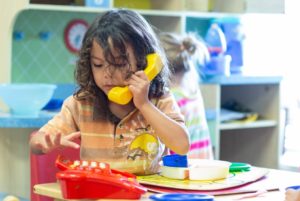 Act it out. Use role play to help the young learners in your classroom take the perspective of another child or a character in a book you’re reading (a great way to boost empathy). Role play might also be way to assist children in identifying the times when they may feel angry or upset.
Act it out. Use role play to help the young learners in your classroom take the perspective of another child or a character in a book you’re reading (a great way to boost empathy). Role play might also be way to assist children in identifying the times when they may feel angry or upset.
Cultivate empathy during conflicts. While you’re overseeing conflict resolution discussions between two or more children, build empathy skills by encouraging children to label how a peer might be feeling.
 Choose games that require control. To help kids practice impulse control during play, incorporate games that help them develop this skill. Simon Says and Red Light, Green Light are two good examples of games that require children to manage impulses in order to play.
Choose games that require control. To help kids practice impulse control during play, incorporate games that help them develop this skill. Simon Says and Red Light, Green Light are two good examples of games that require children to manage impulses in order to play.
Model calmness. Show children how you keep calm during frustrating or disappointing experiences during the school day. Make sure you explicitly describe why you were frustrated and what strategy you’re using to calm down. You might say something like: “I’m so disappointed it’s raining today and we can’t go outside! I’m going to take some deep breaths and think about the fun things we can do inside instead.”
 Teach breathing techniques. Model and practice deep breathing to help children manage emotions like anger and anxiety. Encourage children to take deep belly breaths and pretend they are blowing out birthday candles when they exhale.
Teach breathing techniques. Model and practice deep breathing to help children manage emotions like anger and anxiety. Encourage children to take deep belly breaths and pretend they are blowing out birthday candles when they exhale.
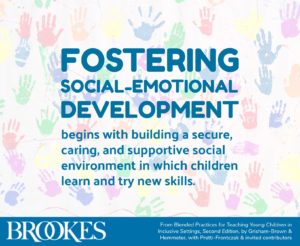 Children who develop empathy and emotional regulation at a young age will be better prepared for the rigors of school—and on their way to becoming compassionate and considerate citizens. Try today’s tips in your early childhood classroom to build these critical skills, and share your favorite ideas with parents so they can reinforce social-emotional learning at home.
Children who develop empathy and emotional regulation at a young age will be better prepared for the rigors of school—and on their way to becoming compassionate and considerate citizens. Try today’s tips in your early childhood classroom to build these critical skills, and share your favorite ideas with parents so they can reinforce social-emotional learning at home.
Want more on early childhood inclusive education? Check out the book:
 Blended Practices for Teaching Young Children in Inclusive Settings, Second Edition
Blended Practices for Teaching Young Children in Inclusive Settings, Second Edition
By Jennifer Grisham, Mary Louise Hemmeter, and Kristie Pretti-Frontczak
An essential reference to keep and use for years to come, this book is your guide to blending the best of special and general education, developing effective curricula, and improving outcomes for all children.
LEARN MORE

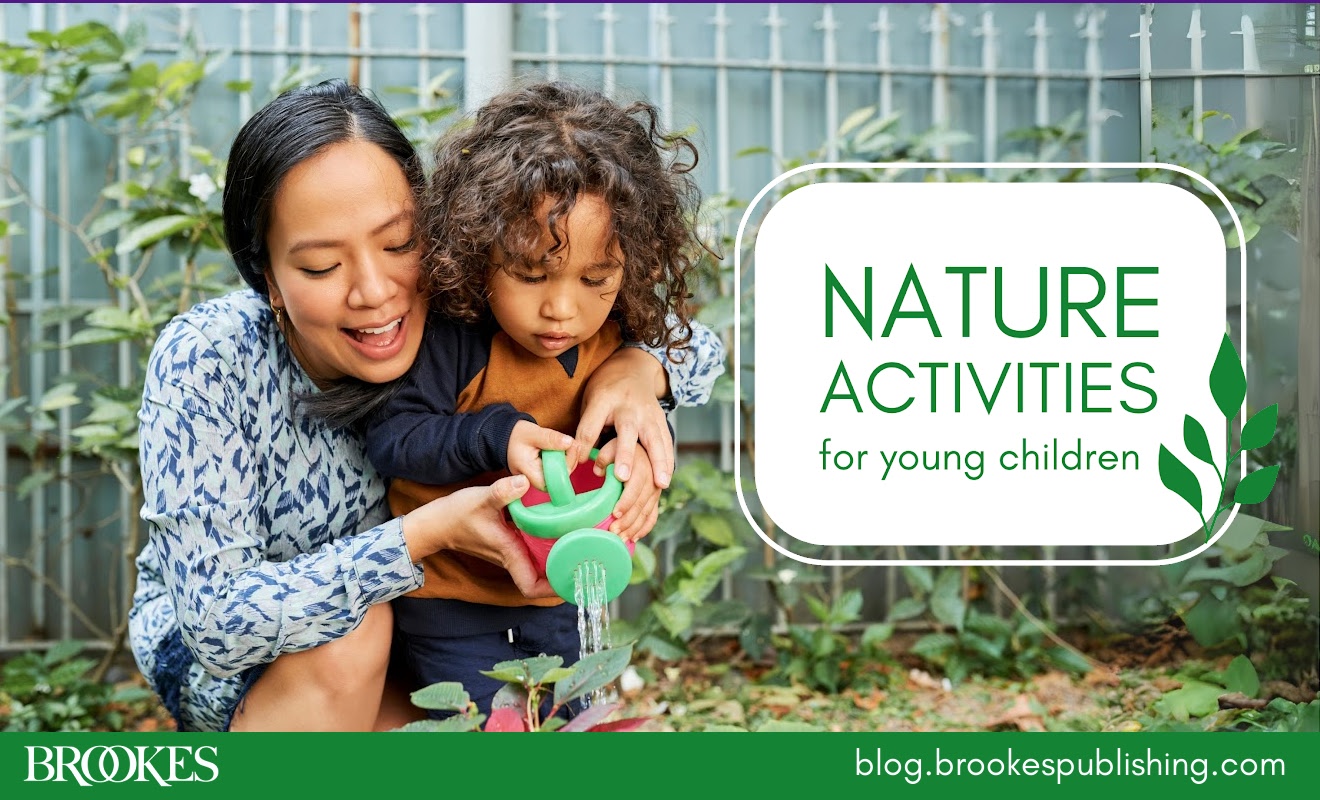
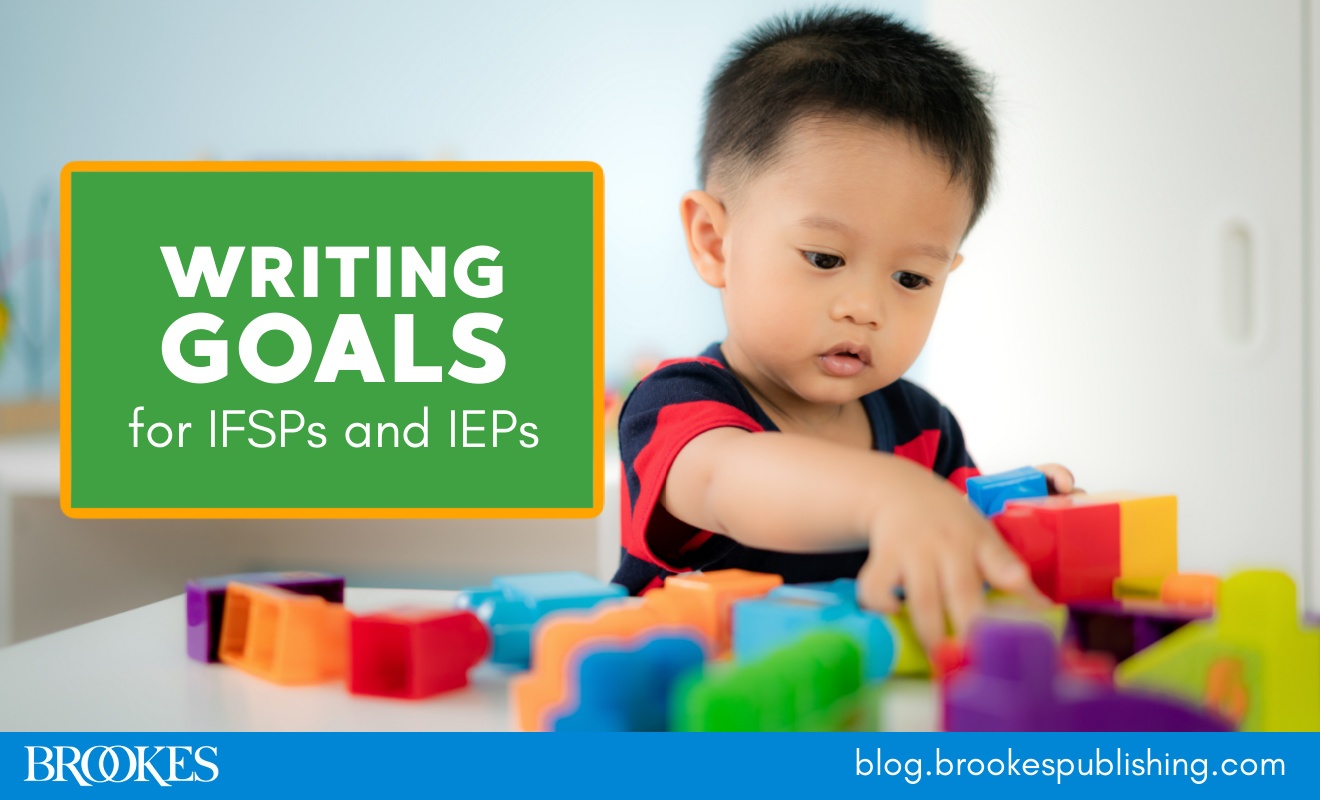

Write a Comment
Your email address will not be published. Required fields are marked *
comments
Lindsay says
This is AMAZING... wish I had it years ago!
Cecilia Lazcano says
This are great recommendation. Can I find them in a PDF form or as a flyer to share with caregivers?
jlillis says
Hi Cecilia,
We don't have the blog post in PDF form at the moment, but I can explore getting it formatted that way. In the meantime, please feel free to share the link to the post with any parents who might benefit from it!
Post a Comment